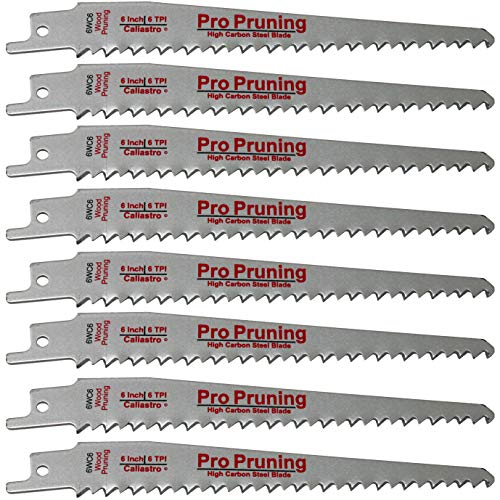Have you ever wrestled with a stubborn tree root, only to find your shovel bouncing uselessly off the hard ground? Digging up roots can be a backbreaking, time-consuming chore. It’s a common problem for anyone who gardens, landscapes, or does any kind of yard work. Choosing the right tool can make a big difference between a frustrating afternoon and a job well done. However, picking the perfect Sawzall blade for cutting roots in dirt can feel overwhelming. There are so many different types! It’s tough to know which one will slice through those tough roots without getting dull or breaking.
This blog post is for you if you’re tired of struggling. We’ll explore the best Sawzall blades for tackling roots in dirt. We’ll look at different blade materials, tooth designs, and sizes. You’ll learn what features to look for and what to avoid. By the end, you’ll be able to pick the perfect blade and cut through roots like a pro. You will save time, energy, and frustration. Get ready to make your yard work easier!
Let’s dive in and discover the best Sawzall blade for your needs.
Our Top 5 Sawzall Blade For Cutting Roots In Dirt Recommendations at a Glance
Top 5 Sawzall Blade For Cutting Roots In Dirt Detailed Reviews
1. TOLESA 12 Pack CR-V Sawzall Pruning Blades 6 Inch+9 Inch for Tree Branch Root Wood Cutting
Rating: 9.4/10
Looking for a great gift for the handy person in your life? The TOLESA 12 Pack CR-V Sawzall Pruning Blades are a fantastic option. These blades are designed for cutting wood and branches. They come in a gift box, making them perfect for the holidays or any special event. Professionals, DIYers, and gardeners alike can use these blades.
What We Like:
- The blades are made of CR-V steel. This makes them durable and flexible.
- You can cut both soft and hard wood. They can also cut PVC and plastic pipes.
- The blades have sharp teeth for fast and easy cutting.
- The 6-inch blades are good for straight cuts. The 9-inch blades work well for pruning.
- They fit most Sawzall tools.
- The gift box packaging makes it a great present.
What Could Be Improved:
- Some users might prefer more specific blade types for specialized tasks.
Overall, the TOLESA Sawzall pruning blades are a great addition to any toolbox. They are a versatile and reliable option for various cutting needs.
2. Wood Pruning Reciprocating Saw Blades 9 Inch Sawzall Blades for Trees High Carbon Steel Pruning Blade for Reciprocating Saw (5 Pack/5TPI)
Rating: 8.5/10
Tired of struggling with tough tree branches? These Wood Pruning Reciprocating Saw Blades are here to help! These 9-inch Sawzall blades are made for trees. They are made of high carbon steel. This means they are strong and last a long time. You get five blades in a pack. They are designed to make pruning easier and faster.
What We Like:
- The blades are made from high carbon steel. This makes them tough and long-lasting.
- The blades cut wood very well. They make the job easier and faster.
- These blades are made for cutting wood. They work great for tree branches and small logs.
- They fit all brands of reciprocating saws.
- The company offers a 6-month warranty. They will help if something goes wrong.
What Could Be Improved:
- The blades’ lifespan depends on what you cut. Harder wood may wear them down faster.
These VICRING pruning blades are a good choice for anyone who needs to cut wood. They are strong, easy to use, and come with a warranty. You can prune your trees with ease!
3. TOLESA Metal Wood Demolition Reciprocating Saw Blades 9 Inch 8+10TPI Sawzall Blades for Steel Pipe Cutting
Rating: 9.4/10
Need to tear things down? The TOLESA Metal Wood Demolition Reciprocating Saw Blades are ready. These 9-inch Sawzall blades are built for tough jobs. They can cut through metal, wood, and other materials. This 5-pack of blades helps you get your demolition projects done right.
What We Like:
- These blades cut metal and wood very well.
- They can cut through thick materials.
- The blades cut quickly, making your work faster.
- They are made with strong materials and last a long time.
- The blades fit all popular Sawzall tools.
What Could Be Improved:
- None mentioned in the provided text.
These TOLESA blades are a great choice if you need to demolish things. They are strong, fast, and work with many tools. Get these blades and start your next project!
4. Caliastro 6-Inch Wood Cutting & Pruning Saw Blades for Reciprocating/Sawzall Saws – 8 Pack
Rating: 8.6/10
Need to cut wood quickly? The Caliastro 6-Inch Wood Cutting & Pruning Saw Blades are here to help. This 8-pack of blades works with your reciprocating saw. They are built for cutting wood and trimming branches. These blades are made of strong carbon steel and have 6 teeth per inch. This means they cut fast and last a long time. They fit many popular saw brands. A clear plastic case keeps the blades safe in your toolbox.
What We Like:
- You get eight blades in one pack.
- The blades cut wood quickly.
- They are made from high-quality carbon steel.
- These blades fit many different saw brands like DeWalt and Makita.
- The blades come with a storage case.
- The blades are professional grade.
What Could Be Improved:
- The description doesn’t state what type of wood they are best suited for.
The Caliastro blades are a good buy if you need to cut wood often. These blades are a great addition to any tool kit.
5. 12-Inch Reciprocating Saw Blade-Demolition Masonry Wood Cutting Sawzall Pruning Blades Hard Alloy Saw Blades for Cutting Brick
Rating: 8.9/10
Need a tough blade for demolition or cutting through masonry? This 12-Inch Reciprocating Saw Blade is designed for the job! It features a carbon steel tooth design for easy cutting. The blade is strong and can handle materials like red brick, fiber cement, and resin. It works with many popular reciprocating saw brands, making it a versatile tool for your projects. Get ready to tackle your construction, renovation, and demolition work with this blade.
What We Like:
- The carbon steel tooth pitches make cutting easy.
- The blade works on various materials, like brick and fiber cement.
- It’s 1.5mm thick to reduce vibration and cut faster.
- This blade fits many different saw brands.
- It’s a good tool for construction and demolition.
What Could Be Improved:
- You can’t cut hard stones or concrete with stones with this blade.
- It’s only a single blade.
This reciprocating saw blade is a useful tool for many projects. It is a good choice if you need to cut through brick or other similar materials.
Digging Deep: Your Guide to Sawzall Blades for Roots
Are you battling stubborn roots in your yard? A Sawzall blade made for cutting roots in dirt can be your best friend! This guide will help you pick the right one. You’ll learn what to look for and how to use it.
Key Features to Look For
You need a blade that can handle tough jobs. Here are some key features:
- Aggressive Tooth Design: Look for blades with teeth that are spaced far apart. These teeth are like tiny saws. They help cut through dirt and roots quickly.
- Blade Length: Longer blades can reach deeper into the soil. They can cut thicker roots, too. Choose a length that fits the job.
- Durable Construction: The blade needs to be strong. It will hit rocks and dirt. Look for blades made of tough materials.
- Shank Type: Make sure the shank fits your Sawzall. The shank is the part that goes into the saw. Most saws use a universal shank.
Important Materials
The material the blade is made of is very important.
- High-Carbon Steel: This is a common choice. It’s strong and can cut through roots. It might wear down faster than other options.
- Bi-Metal: Bi-metal blades are very tough. They have a body of high-carbon steel and teeth made of high-speed steel. High-speed steel is harder. This means it stays sharp longer.
- Carbide-Tipped: These blades are the toughest. They have tiny pieces of carbide on the teeth. They can cut through anything, including rocks. They are also more expensive.
Factors That Improve or Reduce Quality
Some things make a blade good or bad.
- Tooth Design: A good tooth design is important. It needs to be sharp and strong. The teeth should be spaced correctly.
- Material Quality: The material matters. Better materials mean a longer-lasting blade.
- Heat Treatment: Blades are often heated. This makes them stronger. A good heat treatment helps a blade last longer.
- Coating: Some blades have a coating. This can protect the blade from rust and wear.
- Brand Reputation: Some brands make better blades than others. Research brands before you buy.
User Experience and Use Cases
Using these blades can be tricky. Here’s what you need to know:
- Safety First: Always wear safety glasses and gloves. Roots can be tough. Dirt can fly.
- Start Slow: Begin with a gentle cut. Don’t force the blade. Let the saw do the work.
- Angle Matters: Try different angles. You might find the best angle for cutting a root.
- Clear the Area: Remove any rocks or debris. This can help the blade last longer.
- Use Cases: These blades are great for:
- Removing tree roots that are in the way.
- Cutting roots for landscaping projects.
- Getting rid of roots that are damaging pipes.
- Digging post holes.
Frequently Asked Questions
Here are some common questions about Sawzall blades for cutting roots:
Q: What kind of saw does this blade work with?
A: These blades work with a reciprocating saw, also known as a Sawzall.
Q: What’s the best material for cutting roots?
A: Carbide-tipped blades are the best. They are very durable. Bi-metal blades are also good.
Q: How long should the blade be?
A: It depends on the job. For deeper roots, use a longer blade. For smaller roots, a shorter blade is fine.
Q: Can I cut through rocks with these blades?
A: Carbide-tipped blades can cut through some rocks. Be careful, though. Rocks can damage any blade.
Q: How do I keep the blade from getting dull?
A: Avoid hitting rocks. Don’t force the blade. Let the saw do its work.
Q: How do I change the blade?
A: Your saw’s manual will show you how to change the blade. It is usually easy.
Q: Can I use these blades for other tasks?
A: Yes, you can. They can cut wood and other materials. However, they are made for roots.
Q: How long will a blade last?
A: It depends on the material and how you use it. Carbide-tipped blades last the longest.
Q: Where can I buy these blades?
A: You can find these blades at hardware stores or online. Check Amazon or other retailers.
Q: What safety gear do I need?
A: Always wear safety glasses and gloves. Consider wearing a dust mask, too.
In conclusion, every product has unique features and benefits. We hope this review helps you decide if it meets your needs. An informed choice ensures the best experience.
If you have any questions or feedback, please share them in the comments. Your input helps everyone. Thank you for reading.

Hi, I’m Tom Scalisi, and welcome to The Saw Blog! I started this blog to share my hands-on experience and insights about woodworking tools—especially saws and saw blades. Over the years, I’ve had the chance to work with a wide range of tools, and I’m here to help both professionals and hobbyists make informed decisions when it comes to selecting and using their equipment. Whether you’re looking for in-depth reviews, tips, or just advice on how to get the best performance out of your tools, you’ll find it here. I’m excited to be part of your woodworking journey!





